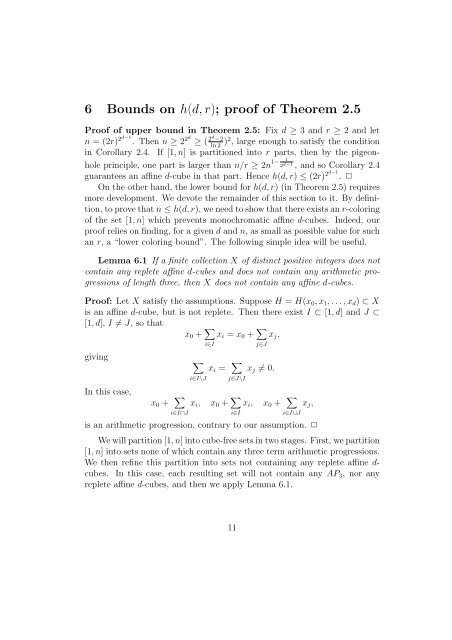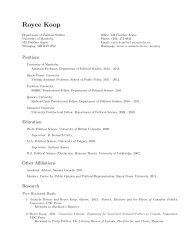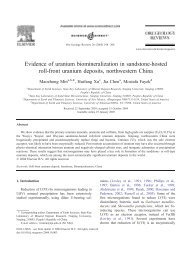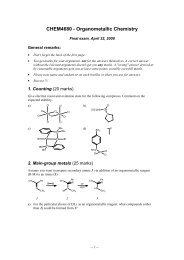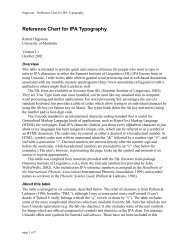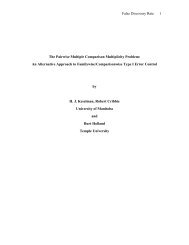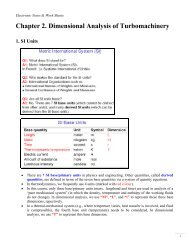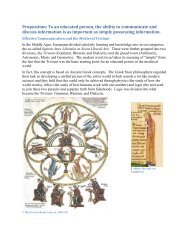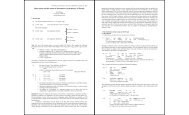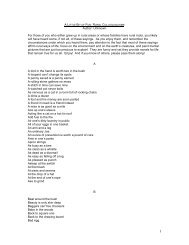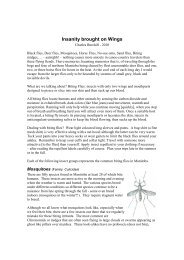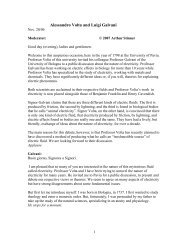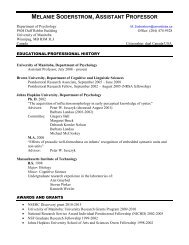Extremal problems for affine cubes of integers - University of Manitoba
Extremal problems for affine cubes of integers - University of Manitoba
Extremal problems for affine cubes of integers - University of Manitoba
Create successful ePaper yourself
Turn your PDF publications into a flip-book with our unique Google optimized e-Paper software.
6 Bounds on h(d, r); pro<strong>of</strong> <strong>of</strong> Theorem 2.5<br />
Pro<strong>of</strong> <strong>of</strong> upper bound in Theorem 2.5: Fix d ≥ 3 and r ≥ 2 and let<br />
n = (2r) 2d−1.<br />
Then n ≥ 22d ≥ ( 2d−2 ln 2 )2 , large enough to satisfy the condition<br />
in Corollary 2.4. If [1, n] is partitioned into r parts, then by the pigeon-<br />
1<br />
1−<br />
hole principle, one part is larger than n/r ≥ 2n 2d−1 , and so Corollary 2.4<br />
guarantees an <strong>affine</strong> d-cube in that part. Hence h(d, r) ≤ (2r) 2d−1.<br />
✷<br />
On the other hand, the lower bound <strong>for</strong> h(d, r) (in Theorem 2.5) requires<br />
more development. We devote the remainder <strong>of</strong> this section to it. By definition,<br />
to prove that n ≤ h(d, r), we need to show that there exists an r-coloring<br />
<strong>of</strong> the set [1, n] which prevents monochromatic <strong>affine</strong> d-<strong>cubes</strong>. Indeed, our<br />
pro<strong>of</strong> relies on finding, <strong>for</strong> a given d and n, as small as possible value <strong>for</strong> such<br />
an r, a “lower coloring bound”. The following simple idea will be useful.<br />
Lemma 6.1 If a finite collection X <strong>of</strong> distinct positive <strong>integers</strong> does not<br />
contain any replete <strong>affine</strong> d-<strong>cubes</strong> and does not contain any arithmetic progressions<br />
<strong>of</strong> length three, then X does not contain any <strong>affine</strong> d-<strong>cubes</strong>.<br />
Pro<strong>of</strong>: Let X satisfy the assumptions. Suppose H = H(x0, x1, . . . , xd) ⊂ X<br />
is an <strong>affine</strong> d-cube, but is not replete. Then there exist I ⊂ [1, d] and J ⊂<br />
[1, d], I = J, so that<br />
x0 + <br />
xi = x0 + <br />
xj,<br />
giving <br />
In this case,<br />
x0 + <br />
i∈I∩J<br />
i∈I\J<br />
i∈I<br />
xi = <br />
j∈J\I<br />
j∈J<br />
xj = 0.<br />
xi, x0 + <br />
xi, x0 + <br />
i∈I<br />
i∈I∪J<br />
is an arithmetic progression, contrary to our assumption. ✷<br />
We will partition [1, n] into cube-free sets in two stages. First, we partition<br />
[1, n] into sets none <strong>of</strong> which contain any three term arithmetic progressions.<br />
We then refine this partition into sets not containing any replete <strong>affine</strong> d<strong>cubes</strong>.<br />
In this case, each resulting set will not contain any AP3, nor any<br />
replete <strong>affine</strong> d-<strong>cubes</strong>, and then we apply Lemma 6.1.<br />
11<br />
xj,


